Someone once asked me why banana candy doesn’t taste like real bananas. I thought I knew the answer, but it turns out that the story is a bit different from what I remember hearing on a podcast a couple of years ago. In searching out the answer, I was led down a rabbit hole of fascinating flavor history. There are several reasons why artificial and natural flavorings in certain foods don’t taste like their whole food counterparts — or at least what we’d expect them to taste like.
So, here’s what I learned about popular candy and beverage flavors such as banana, cherry, grape, watermelon and blue raspberry. I hope you find it as fun and interesting as I do!
Banana
In searching out the answer to why banana candy doesn’t taste like real bananas, I found out that artificial banana flavor actually does taste like real bananas, however, the bananas that it more closely resembles are not the variety that are the most widely available today.
Around 1860, chemists were working on synthesizing flavor compounds for candies and such. They ended up synthesizing a chemical compound called isoamyl acetate and noticed the fruity aroma. If you’ve ever taken an undergrad organic chemistry lab, you probably remember this one and the strong artificial banana scent upon completing the lab successfully. It’s a very general fruity flavor, so depending on the country or even the person, they could associate it with a different fruit, especially back in the 1860s when bananas weren’t as widely available as they are today.
The British actually associated this scent with the Jargonelle pear, because those were common in the region at the time. So, they used it in pear flavored candies. Pears weren’t as common in the U.S., so in the U.S. it was marketed as a banana flavor. But why did they decide to use it as a banana flavor when bananas don’t really taste much like this artificial banana flavor? Well, it actually did taste more like the bananas that were available during that time period, a variety that was called the Gros Michele. This variety isn’t grown in very many places today because it was almost entirely wiped out in the 1950s due to a fungal disease. The banana variety that is more widely available today is the Cavendish, which tastes a bit different than the Gros Michele. The technology wasn’t available yet to be able to isolate and identify flavor compounds from fruit, so it wasn’t until much later that isoamyl acetate was found to be a compound present in bananas.
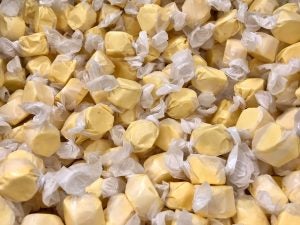
Not only that, but what they found was that there’s more isoamyl acetate present in the Gros Michele variety than the Cavendish, which is why artificial banana flavor tastes and smells more like that older variety than it does the Cavendish. What you may have heard, which is what I had heard, was that the flavor was specifically made to mimic the Gros Michele, but it turns out that’s not the case. When scientists originally synthesized isoamyl acetate, they didn’t even know that it was a compound present in bananas.
So, when you taste that artificial banana Laffy Taffy type flavor now, you’re getting a glimpse into what the bananas of the past tasted like. Even though flavor chemists today can create banana flavors that more closely represent the bananas we are more familiar with, that banana flavor in candies, puddings, and confections has been around for so long that it’s what we’ve come to expect when we consume those products.
Grape
Similar to artificial banana flavor, artificial grape flavor came about in the late 1800s when scientists isolated the grape-smelling chemical, methyl anthranilate, from the essential oil of orange blossom. The scent was reminiscent of grapes and was then used in grape-flavored products, specifically soda.
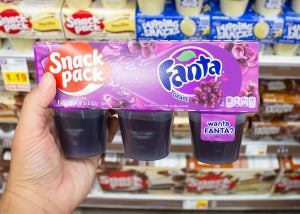
Artificial grape flavor tastes more like Concord grapes than the green and red grapes you typically find on supermarket shelves today.
Watermelon
The technology to identify and isolate specific flavor compounds has come a long way since many of these candy fruit flavors were developed in the late 1800s to mid 1900s. However, it’s still really difficult to mimic exactly the flavor of any given fruit because it can be made up of hundreds of different compounds. In addition, some flavor compounds just tend to break down really easily, so they can be difficult to incorporate into flavors. That’s the case with watermelon.
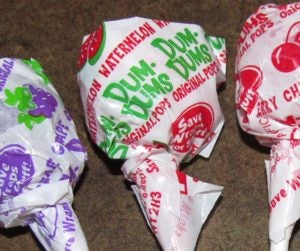
The compound (Z,Z)-3,6-nonadienal may be responsible for much of watermelon’s distinctive aroma and flavor, but unfortunately it’s easily broken down. This limits its potential for use in a natural or artificial flavor. Attempts to produce structurally similar esters have also been unsuccessful, which is why watermelon flavors don’t taste much like real watermelon. This is good news if you like the current watermelon candy flavors, because they’re probably not going anywhere anytime soon.
Cherry
In the late 19th century, cherry flavor was actually more associated with wild cherries or cherry liqueur. Cherry liqueurs were made with the pits of cherries that contain a compound called benzaldehyde. This is the same compound that you find in the essential oil of bitter almonds. There are some additional compounds that make up artificial cherry flavor, but that’s why you get some of that bitter almond flavor in there as well.
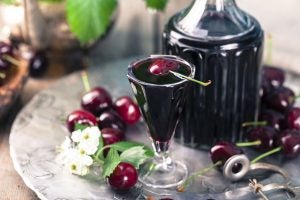
Of course, now flavor chemists have the technology to create a lot of different types of cherry flavors, but the maraschino cherry liqueur type flavor is the one that we associate with candies and sodas since it has been around for so long. As a product developer, I need to be very specific when I contact a flavor company to let them know if I want a cherry flavor that tastes like a traditional candy flavor or more like real cherries. There are just endless possibilities with flavors nowadays!
Blue Raspberry
In 1958, after the food additives amendment was passed, the safety of FD&C Red No. 2 was being called into question. This particular food dye was being used for raspberry flavored foods at the time. It looks as though the first reference to a blue raspberry flavored food was in 1958, which was the Gold Medal blue raspberry snow cone flavor.
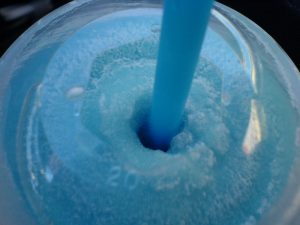
Now, it’s not entirely clear if the blue color was chosen due to the fact that the FDA was potentially going to ban FD&C Red No. 2, but this seems to be the first reference to a blue-raspberry-flavored food. In 1970, Icee came out with their blue-raspberry-flavored frozen carbonated beverage. It seems they went with blue for their new raspberry flavor because they already had their red signature cherry-flavored Icee. It was also strongly inspired by their logo, which is red and blue. Around the same time that Icee came out with their blue-raspberry-flavored Icee, Otter Pop released a blue-raspberry-flavored Otter Pop.
FD&C Red No. 2 was eventually banned in 1976, but it’s unclear whether that had anything to do with these companies creating a blue raspberry flavor. There is an actual bluish raspberry, which is called the white bark raspberry. It’s dark blueish purple when it’s ripe, but it doesn’t seem like this had anything to do with those first blue raspberry products either. I’m not sure if these first blue raspberry products were created with a different flavor than what was used for red-raspberry-flavored products, but food companies today definitely do differentiate blue raspberry flavor, which tends to be a bit more tart than a red raspberry flavor.
More reading here:
- Why Don’t Banana Candies Taste Like Real Bananas?
- The Chemistry of Watermelons: Colour, Aroma, & Explosions
- Why Doesn’t Cherry Candy Taste Like Real Cherries?
- Why don’t fake flavors taste like real fruit?
- What Even Is Blue Raspberry Anyway?
Food Science Babe is the pseudonym of an agvocate and writer who focuses specifically on the science behind our food. She has a degree in chemical engineering and has worked in the food industry for more than decade, both in the conventional and in the natural/organic sectors.



